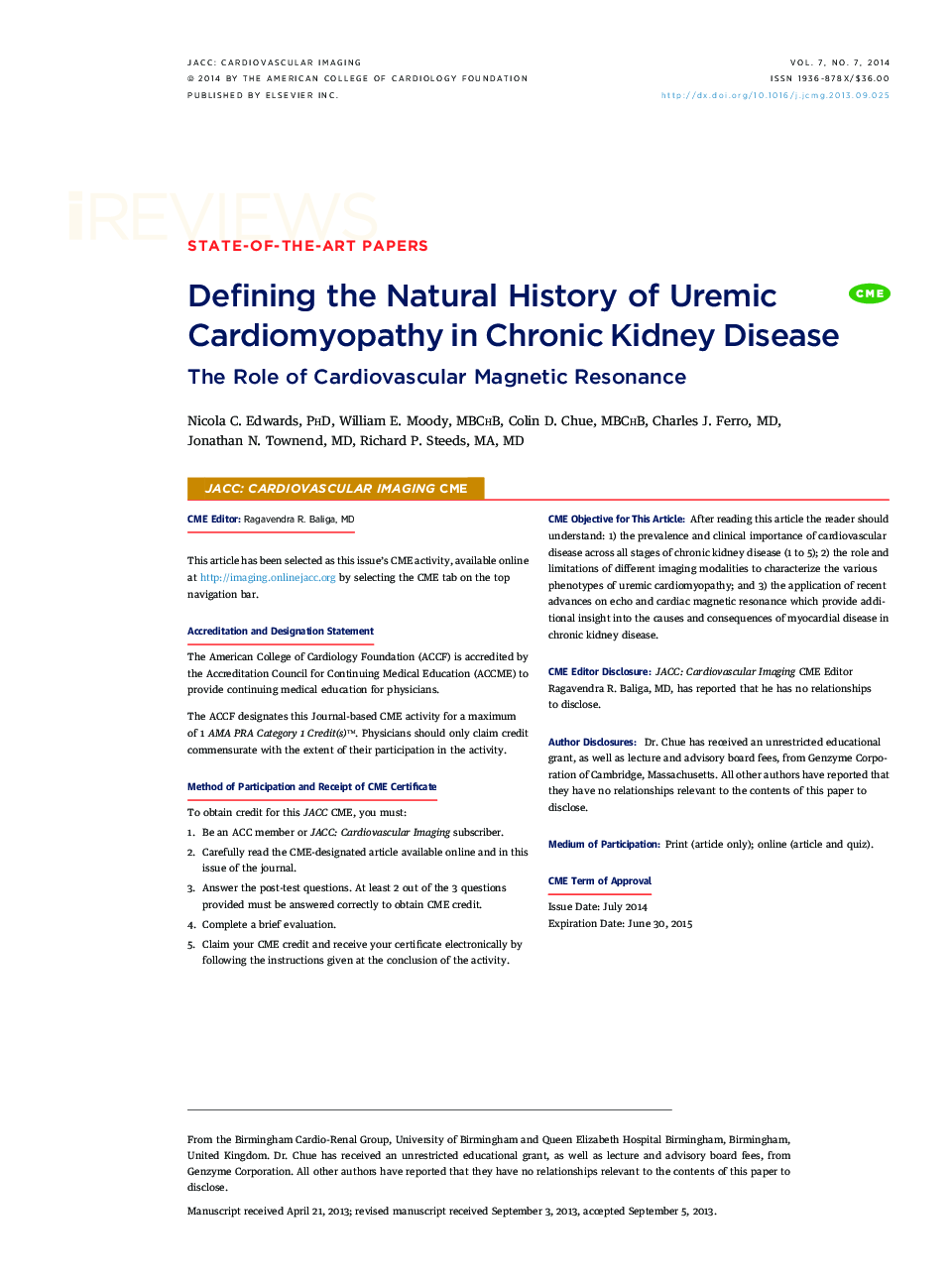| Article ID | Journal | Published Year | Pages | File Type |
|---|---|---|---|---|
| 2937980 | JACC: Cardiovascular Imaging | 2014 | 12 Pages |
Chronic kidney disease (CKD) is an under-recognized, highly prevalent cardiovascular (CV) risk factor affecting 1 in 7 adults. Large epidemiological studies have clearly established a graded association between the severity of CKD and CV event rates. Although patients with end-stage renal disease who are undergoing dialysis are at greatest CV risk, the disease process is evident in the early stages of CKD with glomerular filtration rates as high as 75 ml/min/1.73 m2. Indeed, these patients are at least 6 times more likely to die of CV disease than to reach end-stage CKD. Thus, the major impact of CKD on the population and the healthcare budget is not that of providing renal replacement therapy but the cost of death and disability from premature CV disease.Although end-stage CKD is characterized by a clustering of conventional atherosclerotic risk factors, it has little association with CV event rates. This is reflected in disproportionate levels of sudden cardiac death, heart failure, and stroke, rather than myocardial infarction. Thus it appears that nonatherosclerotic processes, including left ventricular hypertrophy and fibrosis, account for most of the excess CV risk. Over the past decade, the use of cardiac magnetic resonance in CKD has brought about an improved understanding of the adverse CV changes collectively known as uremic cardiomyopathy. The unique ability of cardiac magnetic resonance to provide a comprehensive noninvasive examination of cardiac structure and function, arterial function, myocardial tissue characterization (T1 mapping and inversion recovery imaging), and myocardial metabolic function (spectroscopy) is ideally suited to characterize the phenotype of CV disease in CKD and to provide insight into the mechanisms leading to uremic cardiomyopathy. Concerns relating to an association between gadolinium contrast agents and nephrogenic systemic fibrosis in dialysis recipients have led to the use of lower doses and lower-risk gadolinium agents that appear to minimize this risk.
